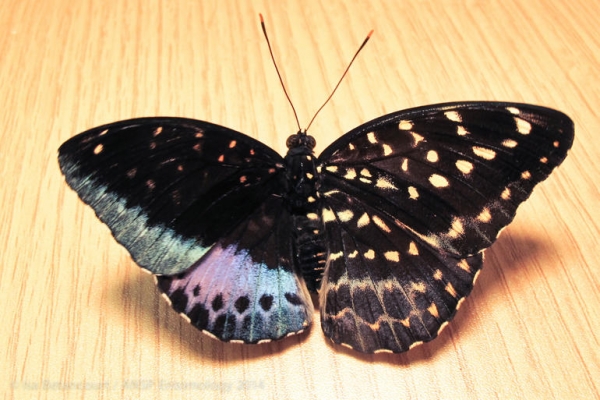
A Half-and-Half Common Archduke Butterfly (Lexias pardalis) is better known as the “brush-footed” butterfly.
Chris Johnson, a volunteer at a butterfly exhibit at Drexel University in California and a retired engineer, first discovered this bizarre feature of the specie.
Johnson found it when he was removing butterflies from the chamber where they first emerge from their chrysalises, or the stage during which it turns into an adult. The butterfly then revealed its characteristics by spreading the wings, which showed its two genders.
Its two right wings were of female of its species — large and brown with yellow and white spots. Meanwhile, its two left wings sported a darker green, blue and purple coloring, a pattern archetypal of males.
“It just gave me goosebumps, it was a total surprise, something I never expected to see,” Johnson said.
This extreme condition is called bilateral gynandromorphy. It happens when there’s a problem during cell division when an insect forms after an egg is fertilized, resulting in female chromosomes in one daughter cell and male in the other.

